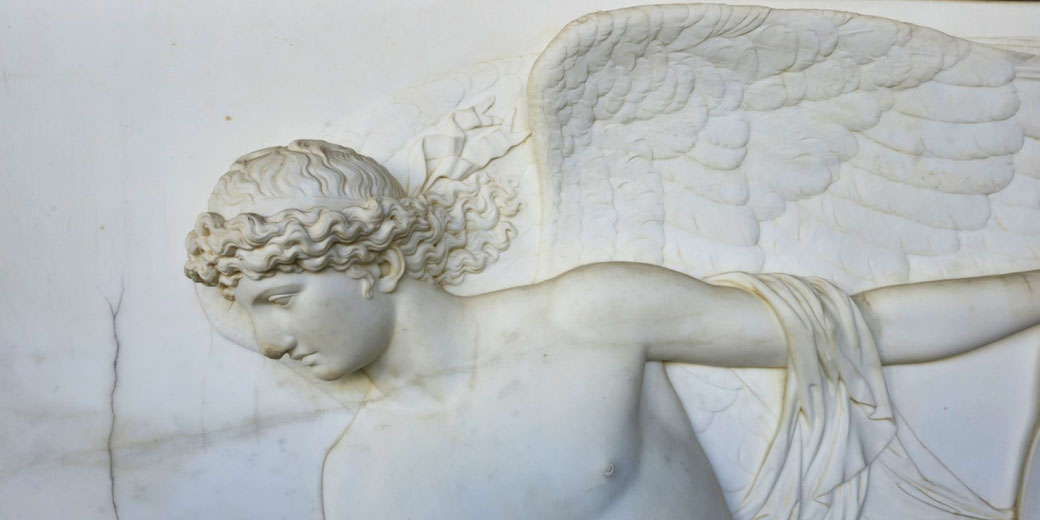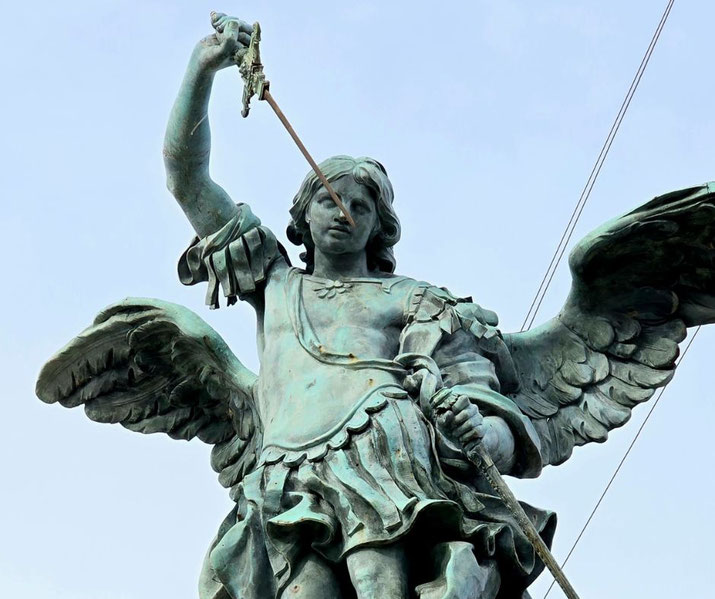The Angels of Mons: Divine intervention or war propaganda?

The Angels of Mons tells of a WWI British army that was miraculously saved from annihilation by a host of angels, who descended from the heavens to protect the soldiers in the face of overwhelming odds.
While the story has been dismissed by some as a mere legend, it continues to fascinate and intrigue many others. So, what is the truth behind the Angels of Mons?
Is it even possible to separate fact from fiction in the surviving accounts?
Wat was the Battle of Mons?
The Battle of Mons was a conflict that was fought between the British Expeditionary Force and the German army in August 1914.
This battle was one of the first major engagements of the First World War. To the horror of the army leadership, it resulted in a decisive British retreat.
However, in the aftermath of the battle, stories began to slowly circulate about a supernatural event that had occurred, which may have saved many soldiers' lives.
What were the 'angels'?
The story goes that as the British soldiers were in retreat from their loss in the battle, they suddenly saw a group of angelic beings appear in the sky.
These beings were said to have been dressed in pure white robes, with large wings and halos.
They were seen to be hovering above the battlefield, almost as if they were protecting the British soldiers from the German army.
According to the most popular form of the legend, the angels remained with the soldiers for the entire night.
Their heavenly presence is meant to have provided the demoralized Tommies with comfort and protection.

The story of the Angels of Mons quickly gained traction, and it was soon widely reported in newspapers and other media outlets.
In the years following the First World War, the story was retold in numerous books, films, and other forms of media.
It became a part of British folklore, and it was widely believed to be true.
Examining the evidence
However, as time passed, the story began to be scrutinized more closely.
Researchers began to delve into the historical records of the Battle of Mons, looking for evidence of the supernatural event.
What they found was a mixture of fact and fiction.
It is true that the British soldiers were in a perilous situation during the Battle of Mons, and that they were facing a much larger and better-equipped German army.
However, there is no contemporary evidence to that soldiers had seen a 'group of angels' during or after the battle.
In fact, there is no mention anything of the sort. None of the soldiers' letters, interviews, or diaries make note of anything supernatural around the time of the battle at all.
So, where did this story come from, and how did it become part of military folk lore?
Historians quickly learnt that the story emerged much later, and it is likely that it was embellished over time.
Where did the story come from then?
Researchers discovered that the origins of the Angels myth may have come from a man named Machen.
Arthur Machen was a Welsh author who wrote a short story titled "The Bowmen," which was published in 1914, shortly after the Battle of Mons.
The story describes a fictional event in which a group of English bowmen who had fought in the Battle of Agincourt in 1415 appeared on the battlefield of Mons and helped the British soldiers defeat the German army.
The story is told in a manner that suggests that it is based on a true event, but was obviously fictional.
It is widely believed that Machen's story had a significant influence on the creation of the Angels of Mons myth.
The story was published in a popular magazine and gained widespread attention, especially among British soldiers who were fighting in the First World War.
The story seemed to provide a sense of hope and comfort to those soldiers who were facing the horrors of war.
What is more, it suggested that there was a supernatural force that was on their side, and that they were not alone in their struggle.
Comparing the two stories
The Angels of Mons myth bears many similarities to Machen's story. Both involve supernatural beings appearing on the battlefield to aid the British soldiers.
The description of the angels in the myth is also similar to the description of the bowmen in Machen's story.
The angels are said to have been dressed in white, with large wings and halos, while the bowmen are described as being dressed in white-bleached medieval clothing, with a supernatural aura around them.
However, it is worth noting that the Angels of Mons myth is not simply a retelling of Machen's story.
The myth has taken on a life of its own and has evolved over time. With each retrelling, new details and variations being injected into the story.
The value of the 'angels' as propaganda
Even though it was clearly fictional, there is a reason the Angels of Mons story became popular and was reprinted in various forms: it was useful as propaganda.
First, the account provided a powerful tool for boosting morale among British soldiers.
The First World War was a brutal and devastating conflict, and soldiers on both sides were facing unimaginable horrors.
As a result, the story provided a small sense of hope and comfort to the British soldiers.
It was comforting to suggest that they were being protected by a divine force.
Secondly, the Angels of Mons story played on the idea of British exceptionalism.
Believing that only the British soldiers were being protected by a supernatural force against the 'evil' enemy reinforced patriotic sentiment and bolster support for the war effort.
The British public may be, therefore, more willing to support the war effort if they believed that God was solely on their side.
Is there any value in the moral of the story?
The Angels of Mons story may have been born out of propaganda and embellished by the creative minds of its creators, but its legacy lives on.
It is a symbol of hope, a testament to the human spirit's ability to find solace in the face of unspeakable tragedy. Whether you believe in the supernatural elements of the story or not, the Angels of Mons has left an indelible mark on history, inspiring countless retellings and adaptations.
Its continued fascination reminds us that, even in the darkest of times, there is always the possibility of hope, the chance that something miraculous may yet occur.
What do you need help with?
Download ready-to-use digital learning resources
Copyright © History Skills 2014-2025.
Contact via email
With the exception of links to external sites, some historical sources and extracts from specific publications, all content on this website is copyrighted by History Skills. This content may not be copied, republished or redistributed without written permission from the website creator. Please use the Contact page to obtain relevant permission.





